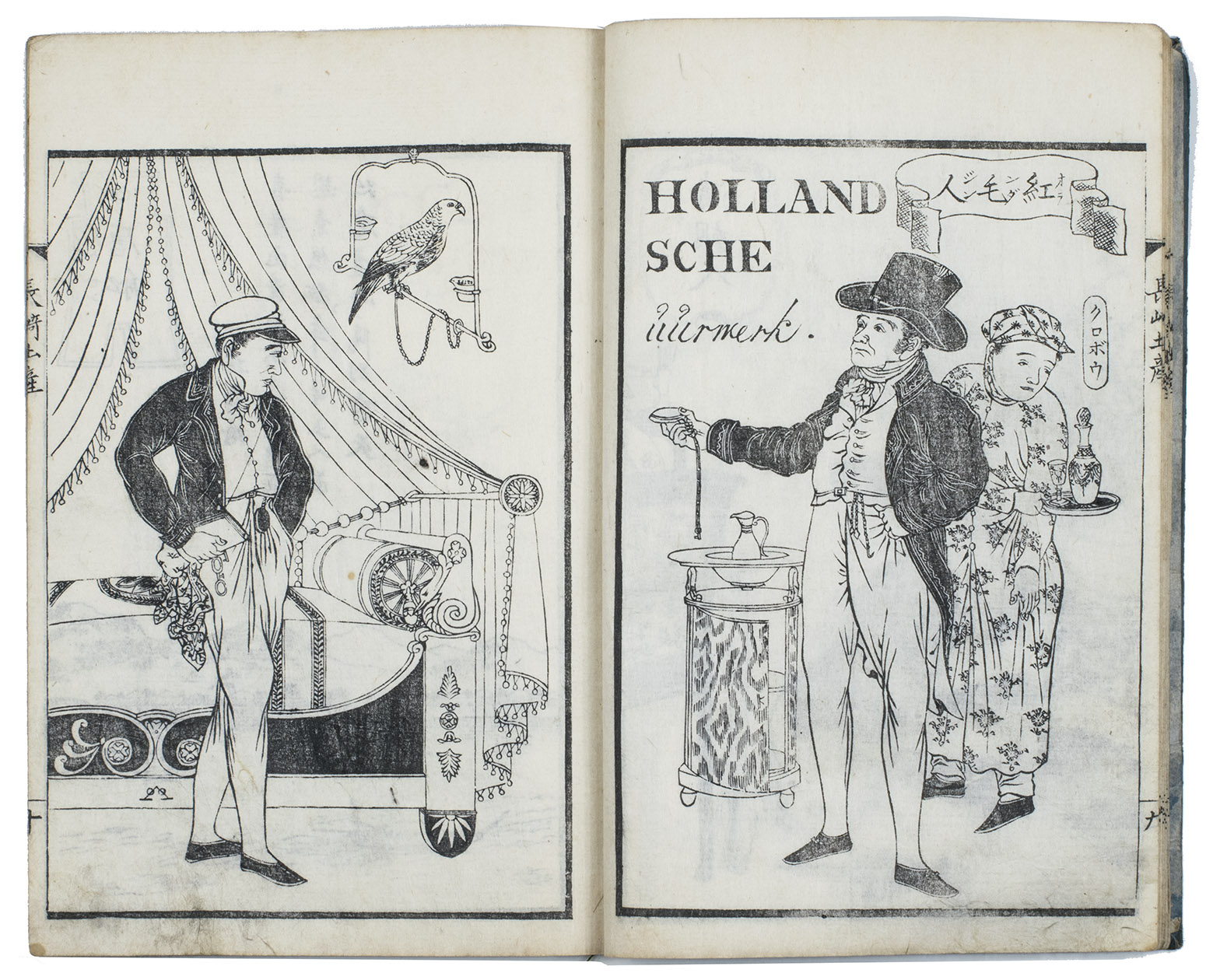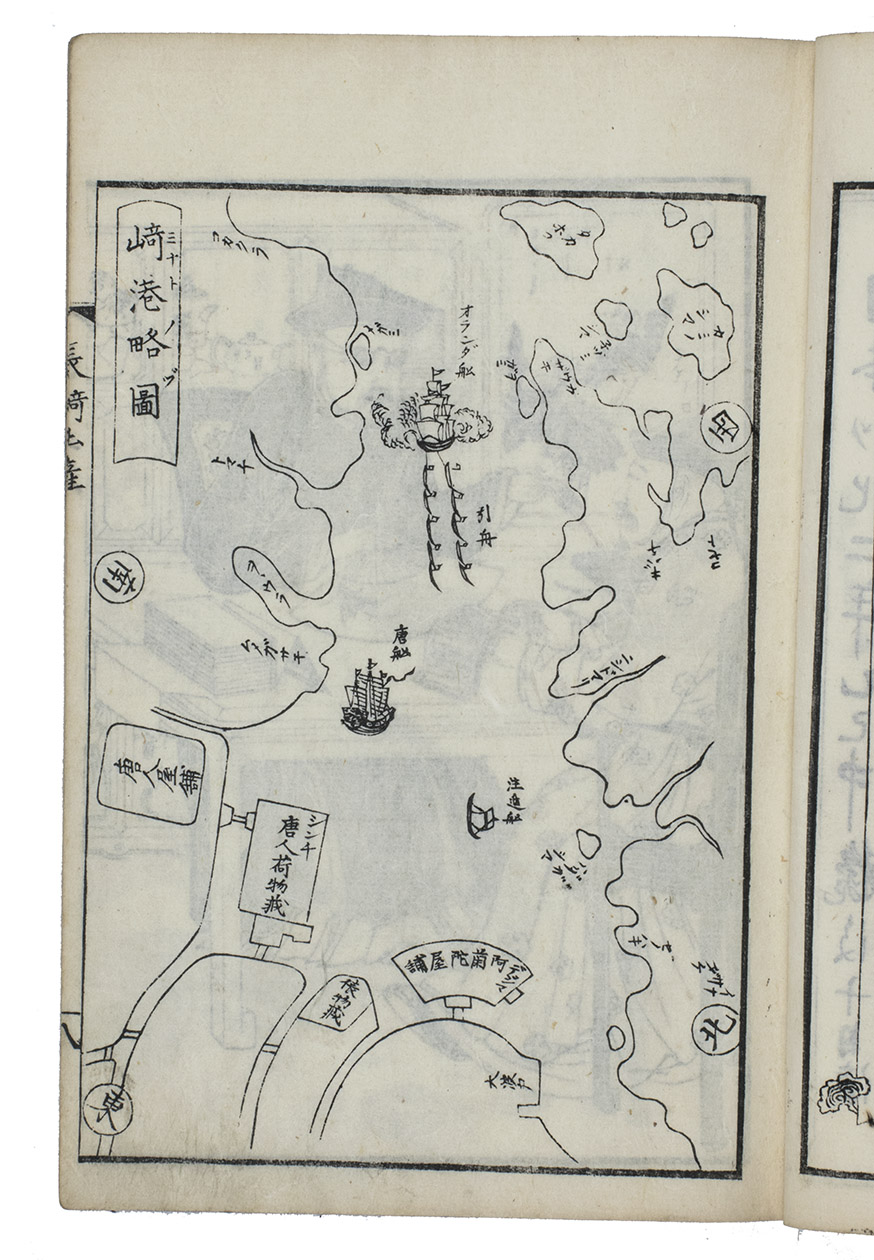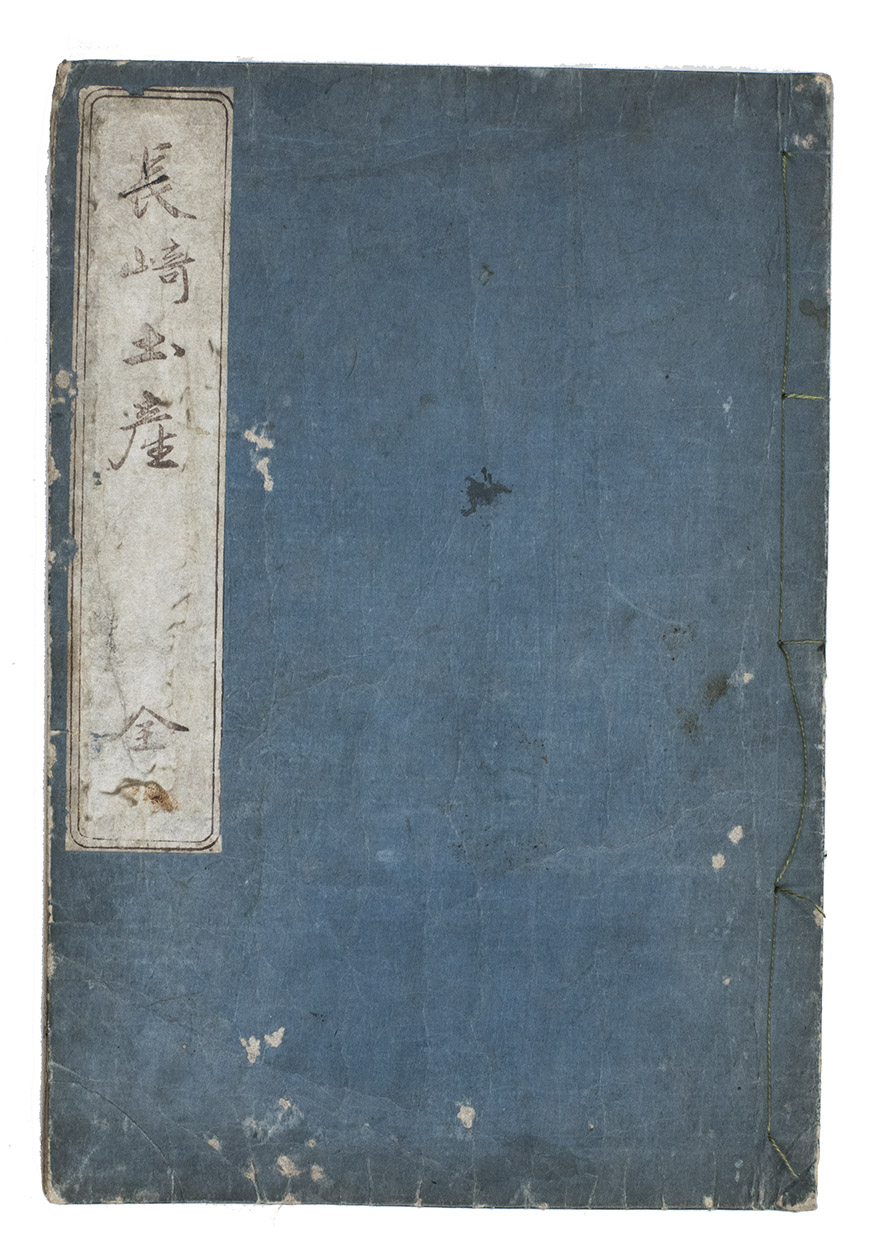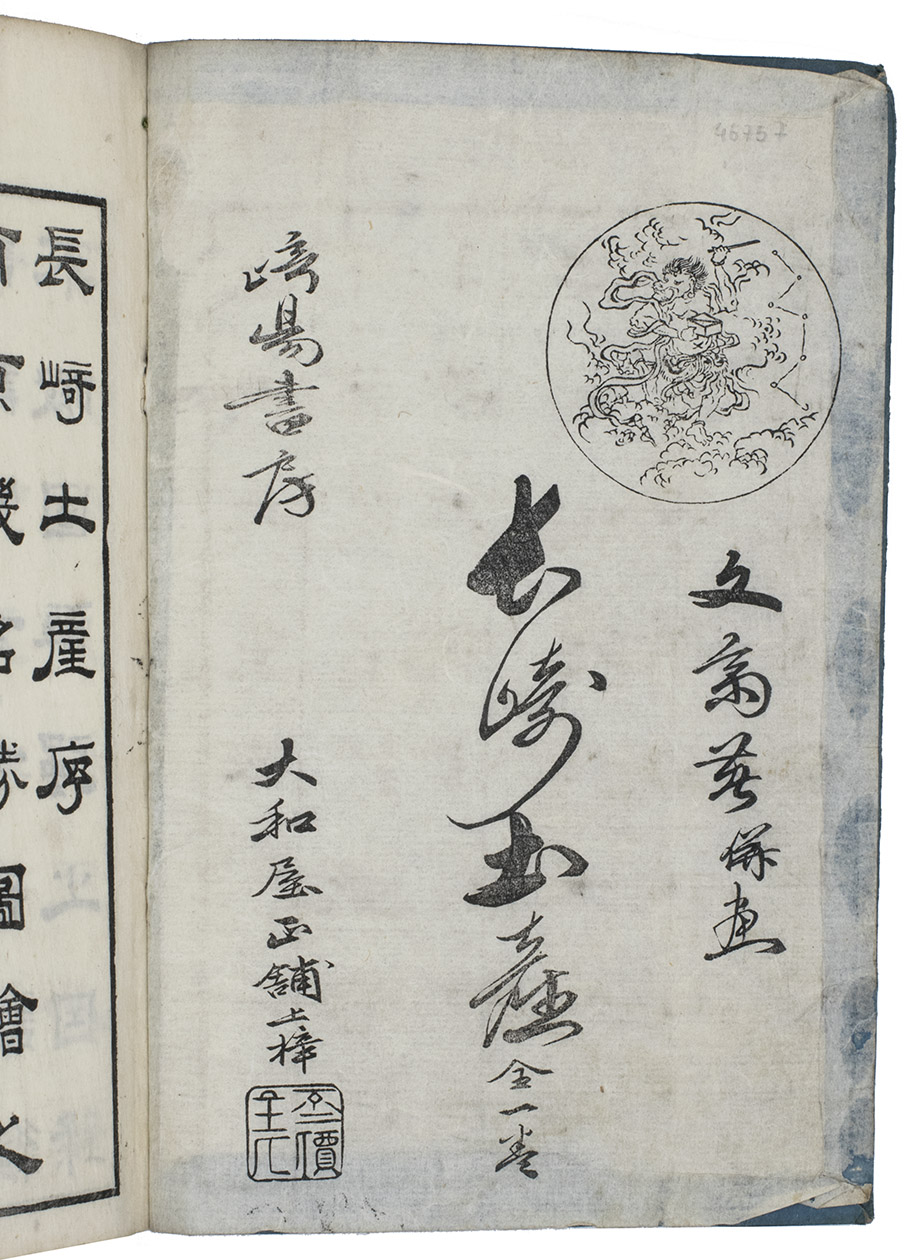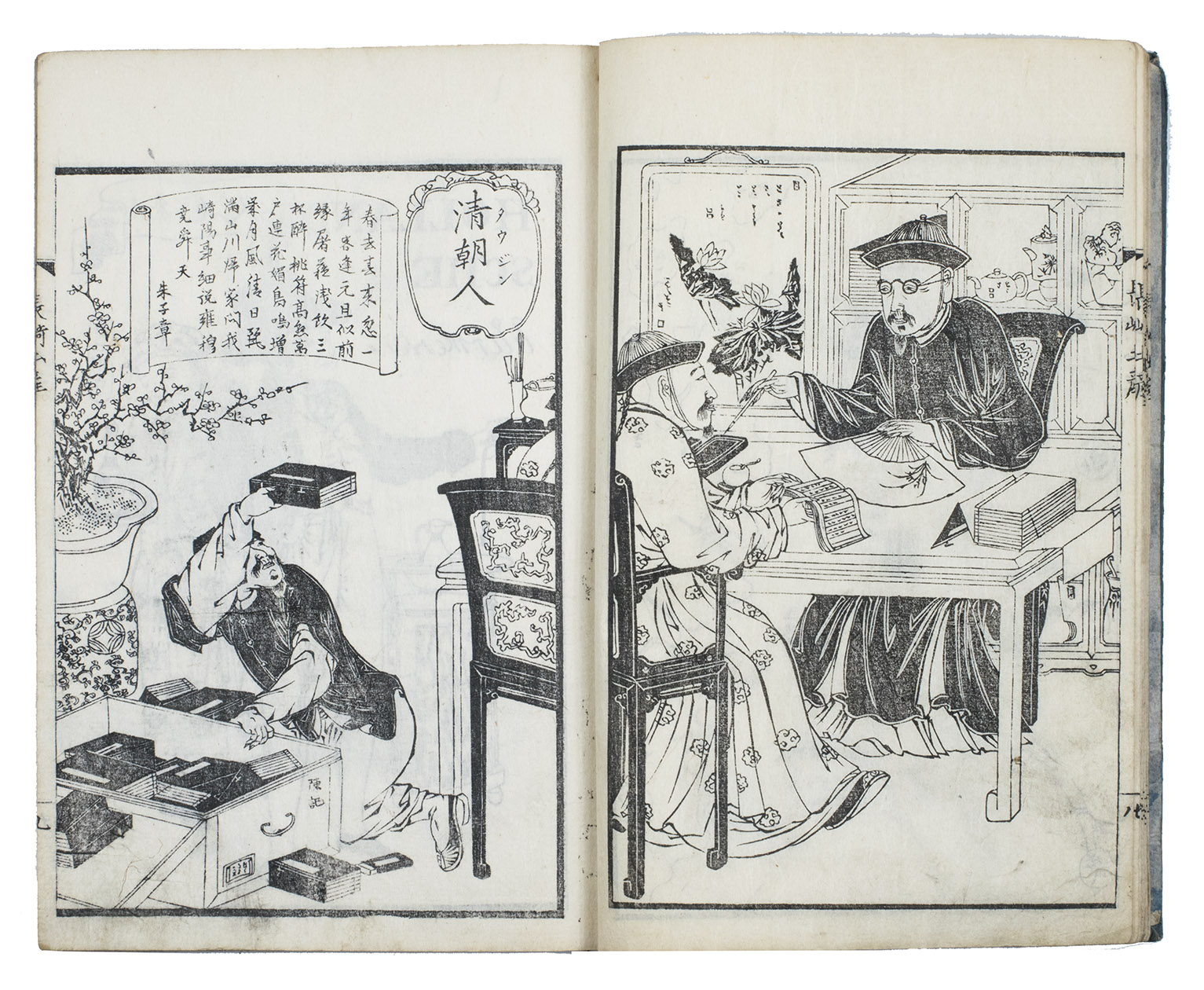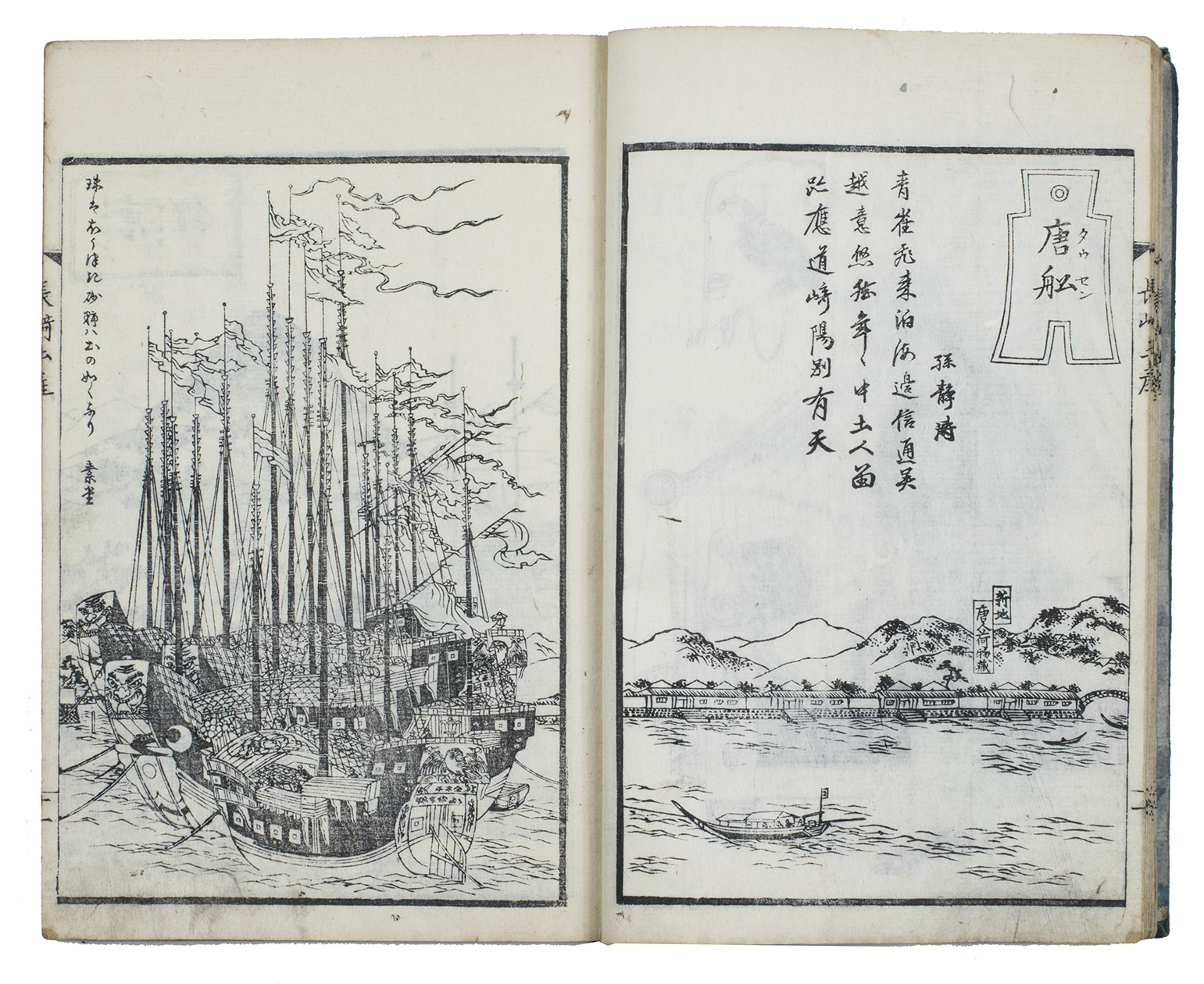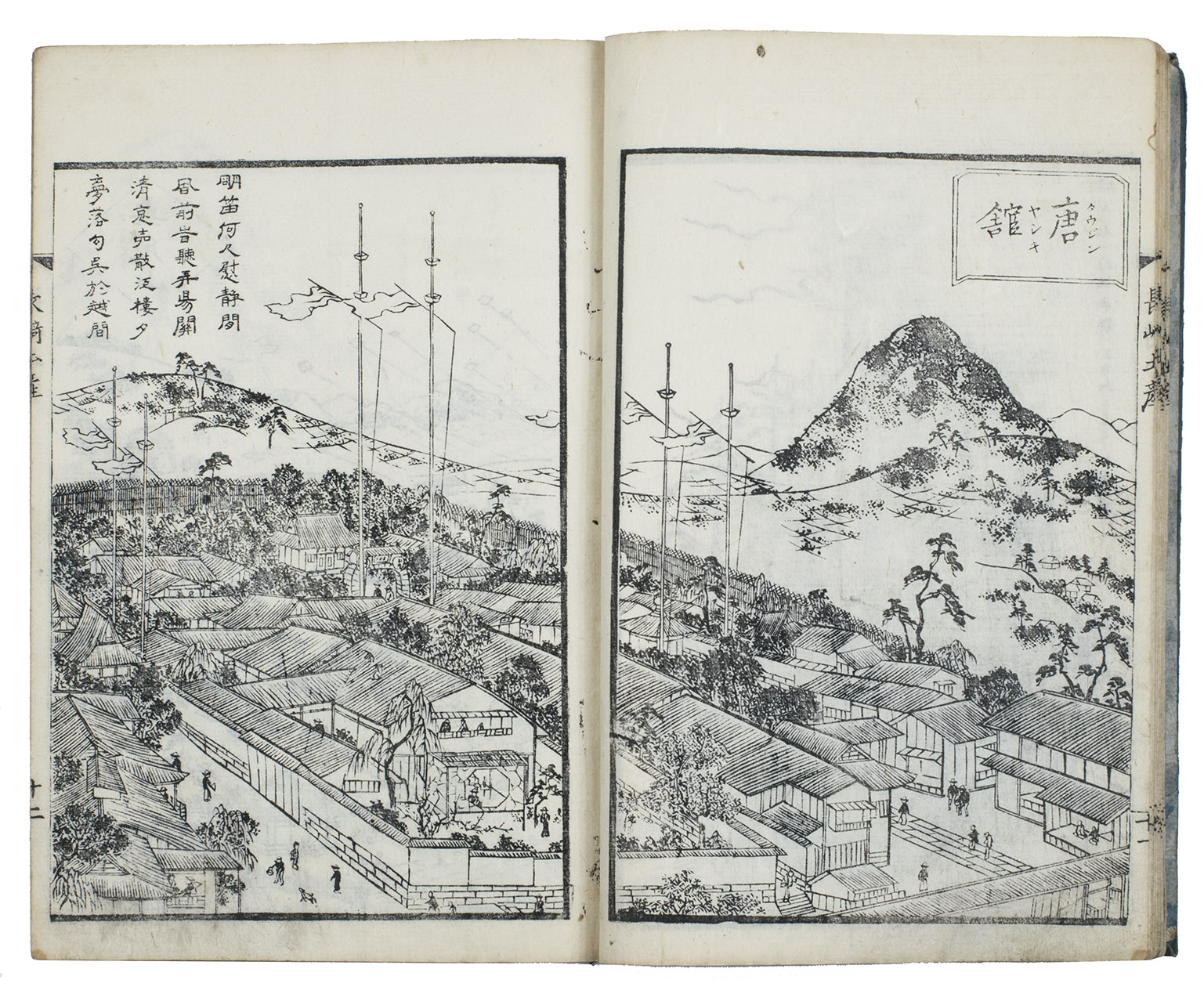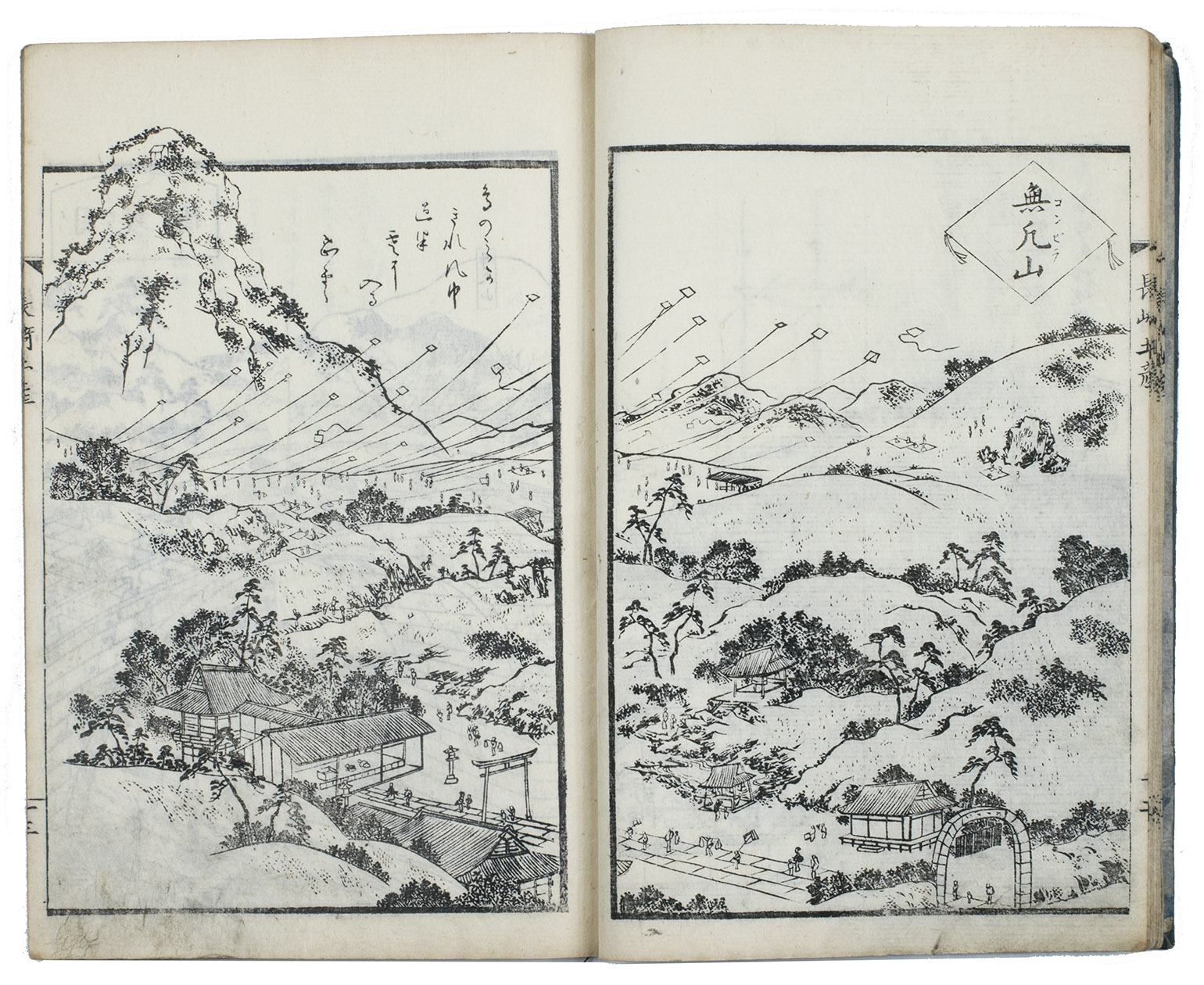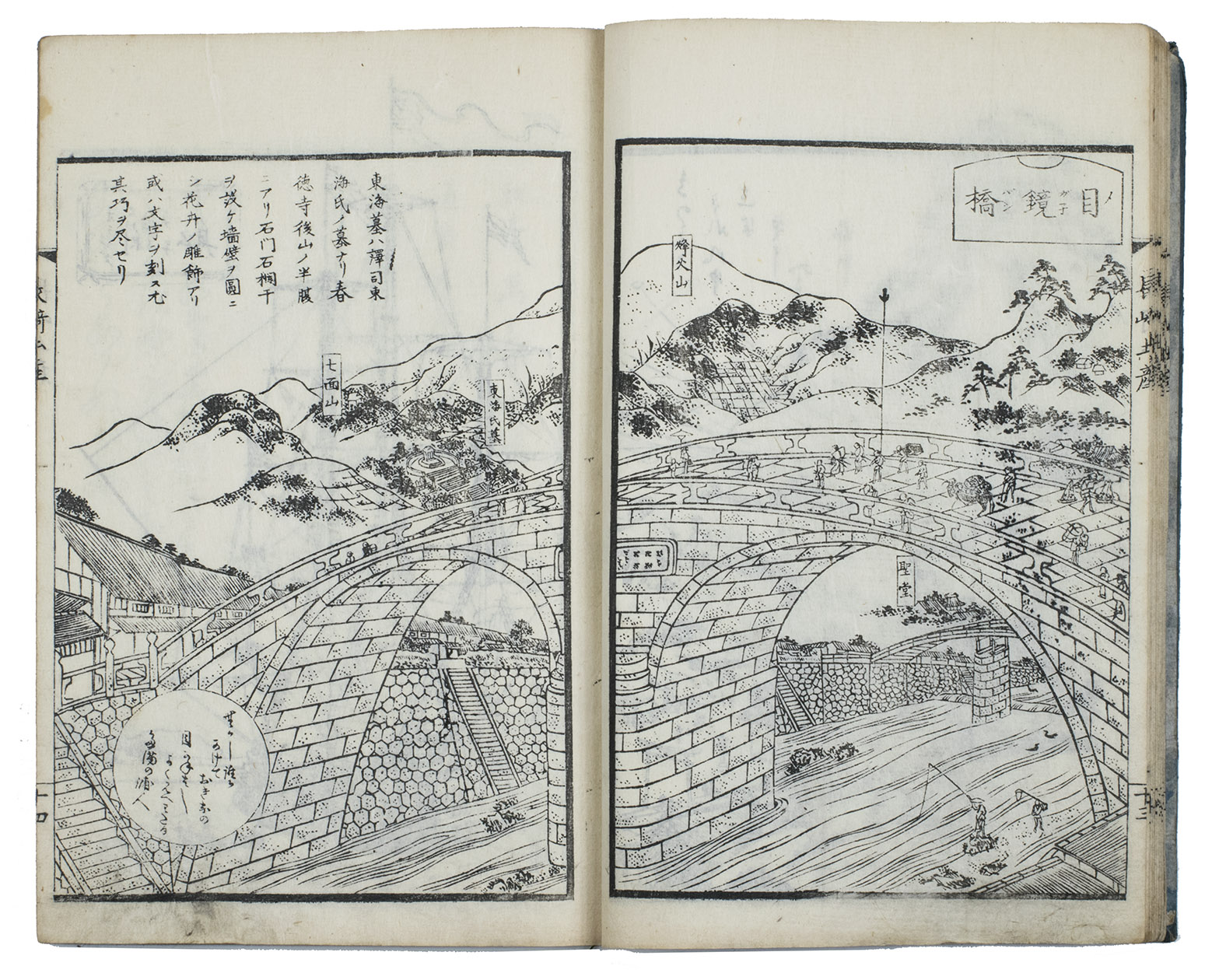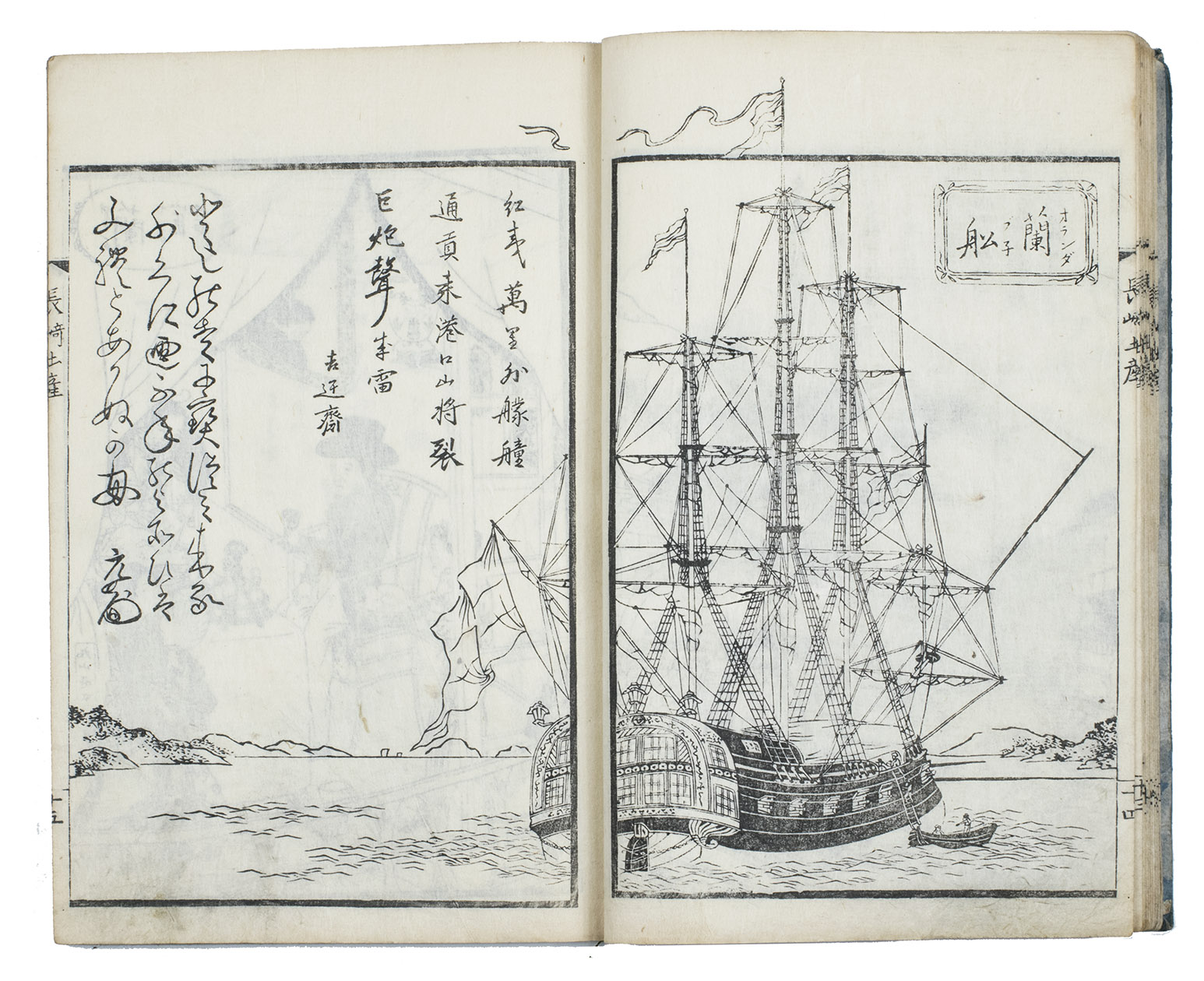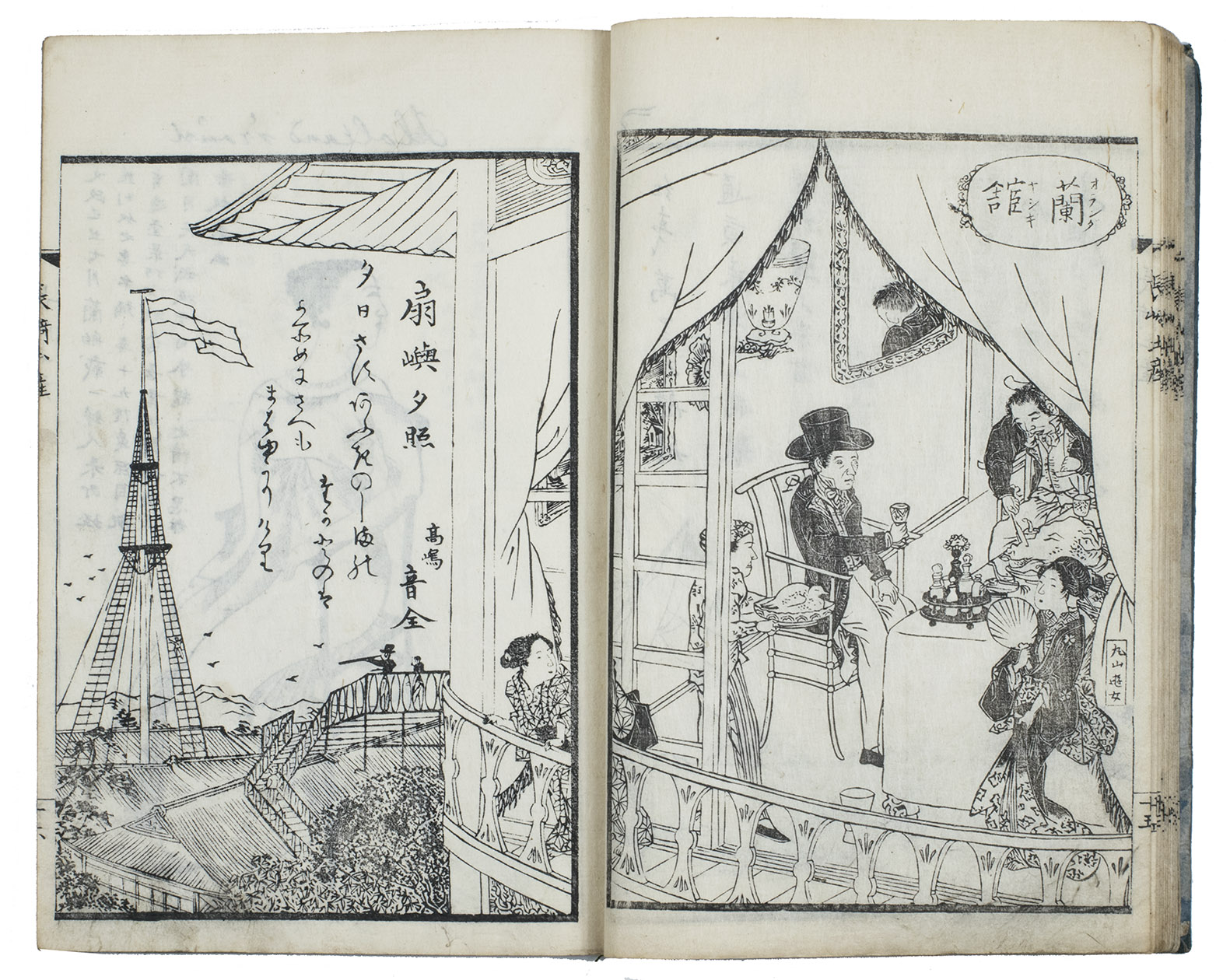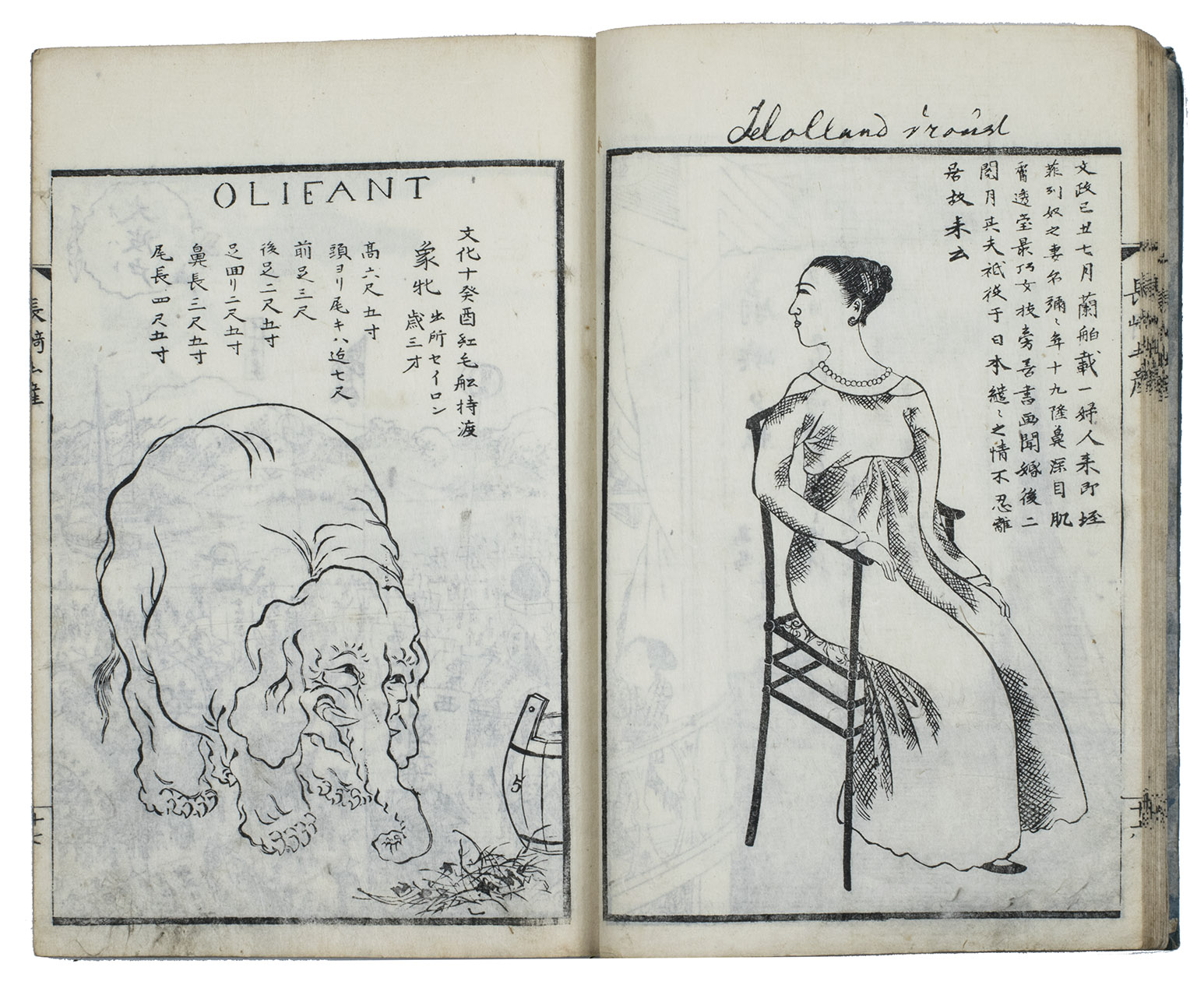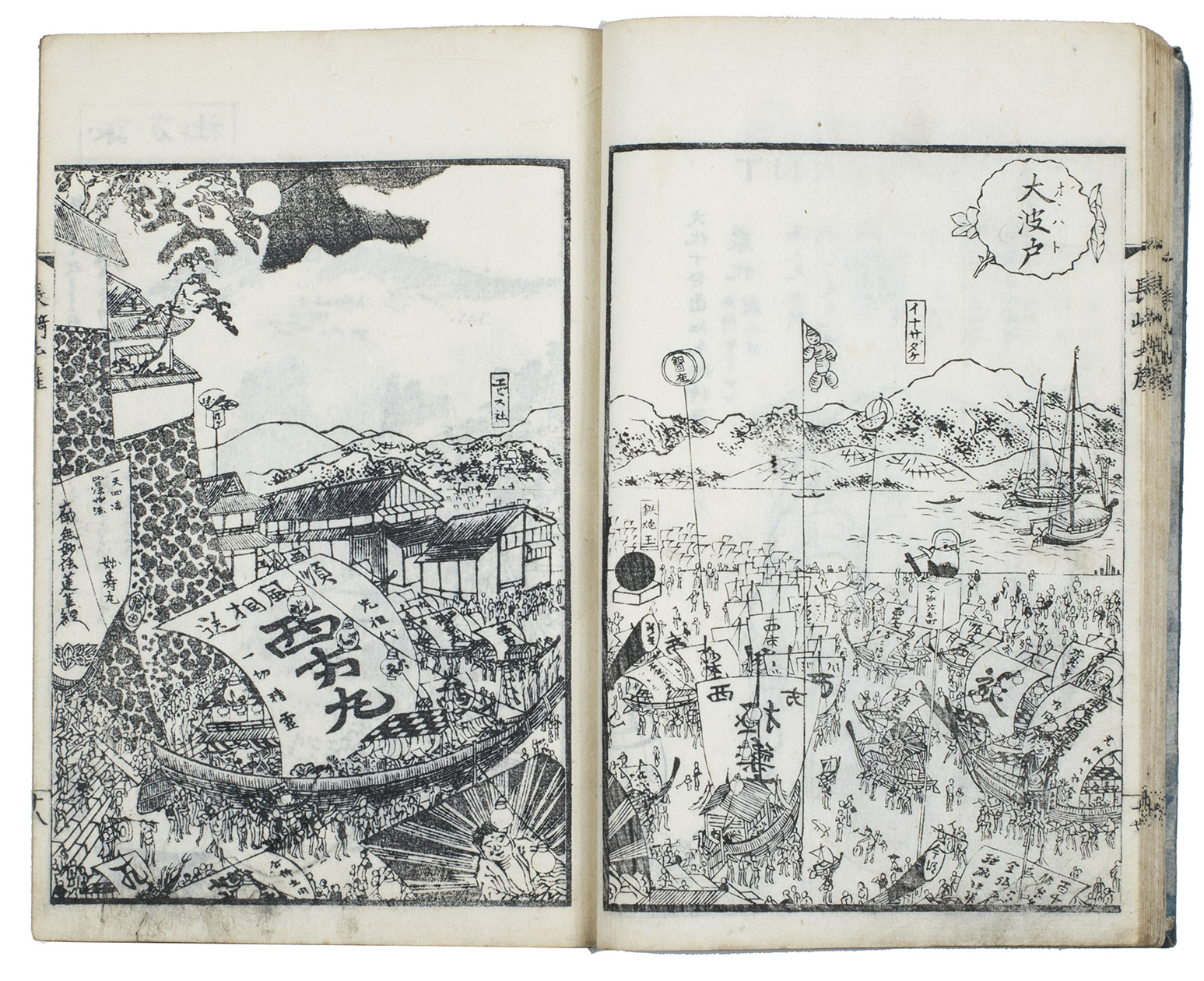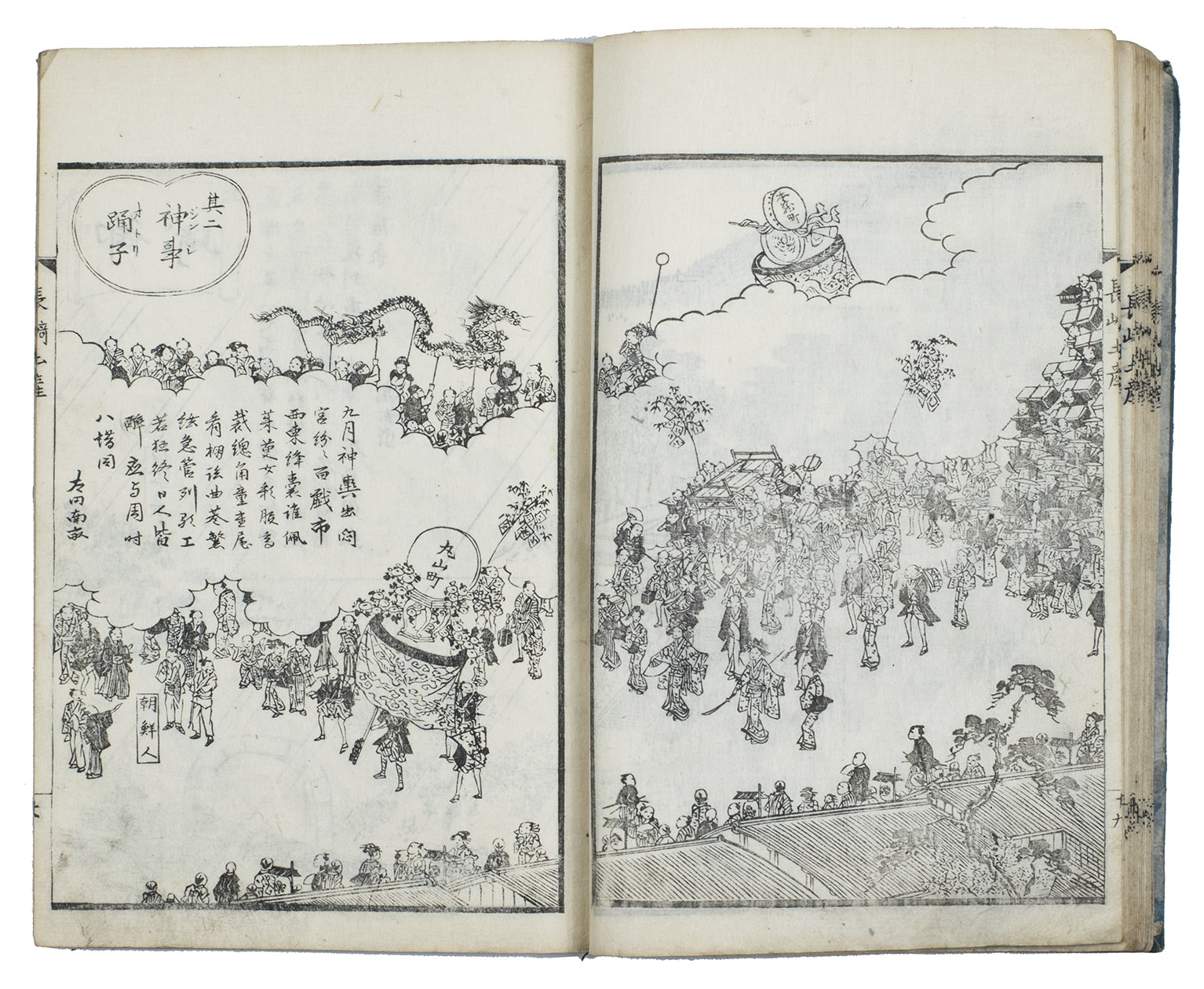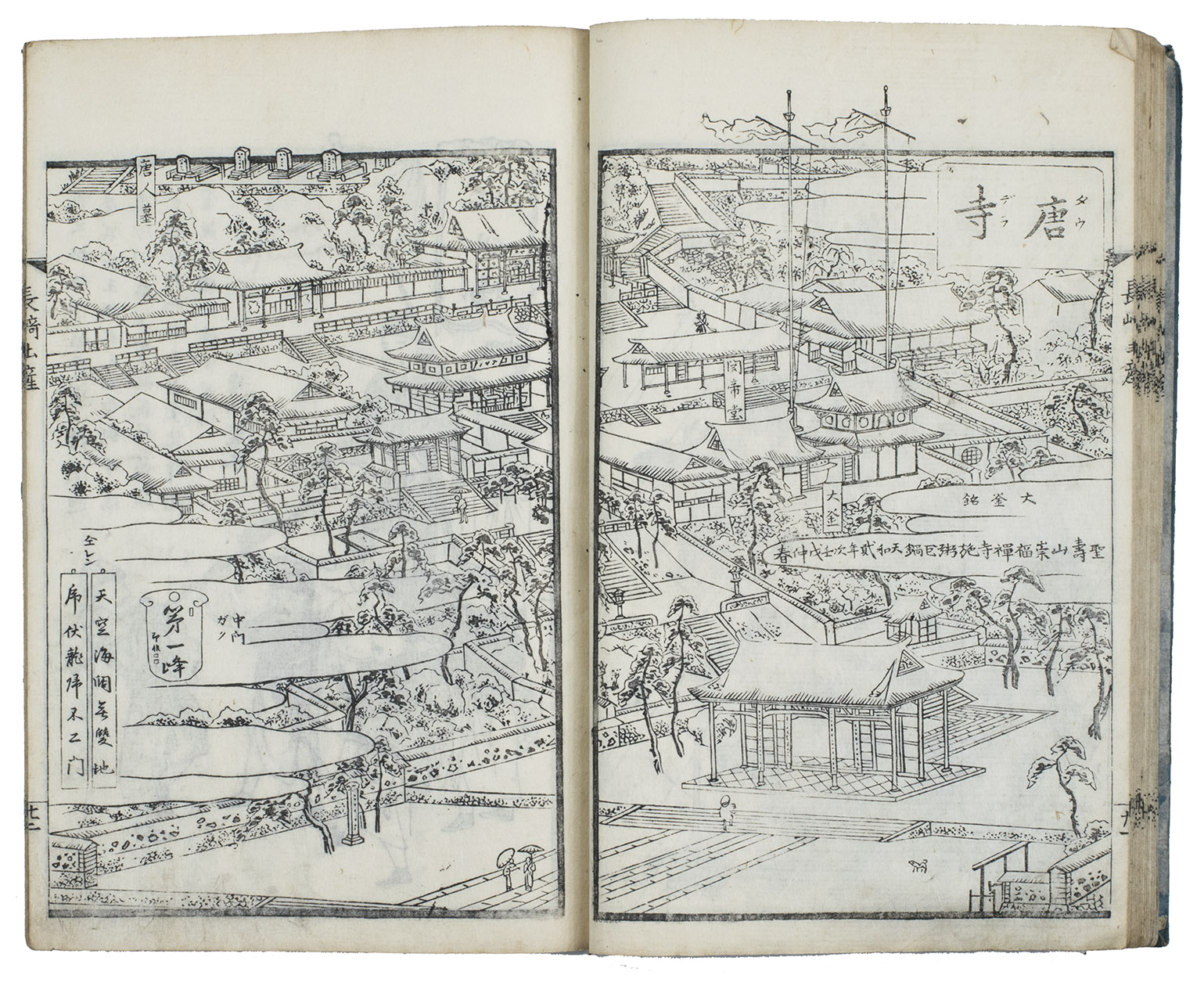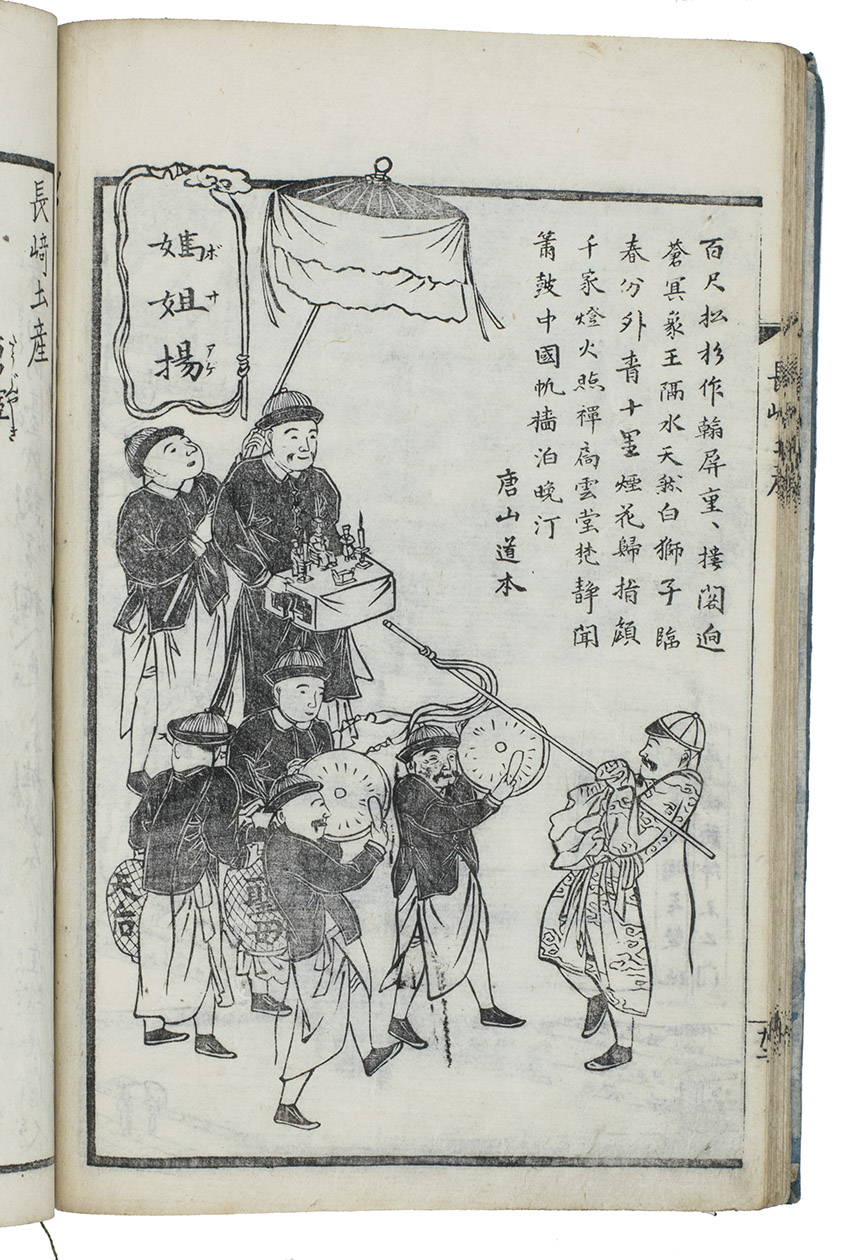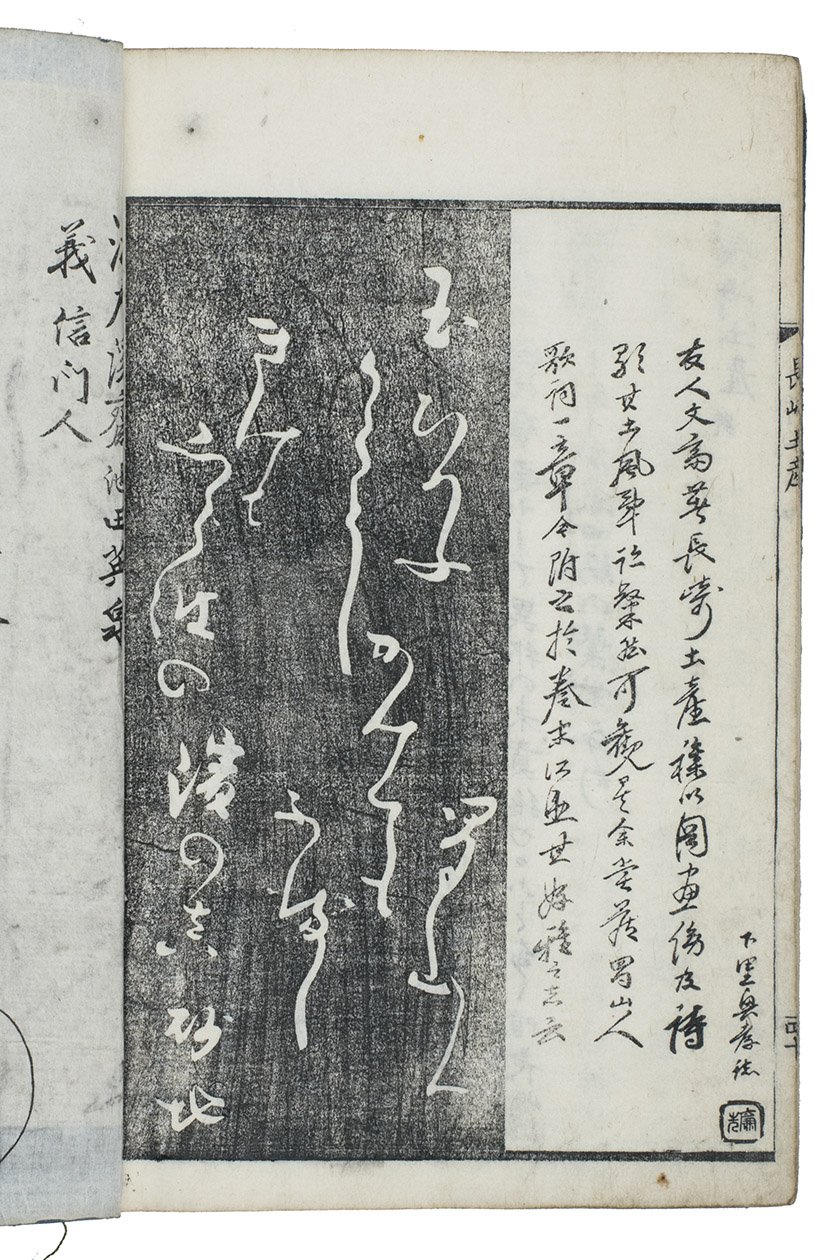ISONO BUNSAI (BUNSAI MADAKI).
Nagasaki miyage [= Souvenir of Nagasaki].
Nagasaki, Yamato-ya Yoshihei juo, Koka 4 [= 1847]. 23 x 15.5 cm. Text and illustrations printed from 42 woodblocks, probably on kozo (mulberry bark) paper (vertical chainlines about 34 mm apart), with an astrological figure and constellation on the title-page (the Mao Xiu lunar mansion?), 12 double-page and 6 full-page illustrations (a few with Dutch titles as well as Japanese) including a map of Nagasaki harbour (showing the Dutch and Chinese trading factories and three ships), two Chinese merchants at a table in the factory library while their servant unpacks a chest of books, a bedroom with a VOC captain(?) and merchant(?), the latter with his pocket watch and Indonesian servant, a cluster of Japanese ships making a dense forest of masts, a landscape with dozens of kites, another with many people on a bridge over a river, a Dutch VOC ship in great detail, a VOC merchant at dinner with an Indonesian servant and two Japanese geishas, a Dutch woman, an elephant, festivals (one with a dragon and drums), and other landscapes, city views, etc. The texts show a wide variety of writing styles (kaisho, gysho and sosho) with the blocks for many texts (and one illustration) including seals of authors or artists, mostly in tensho (seal characters). Original publishers blue paper wrappers in the traditional Japanese fukurotoji manner, publishers manuscript title-label on front wrapper. [1], 40, [1] double ll.
€ 3,250
Beautiful copy of a rare and gorgeously illustrated woodblock tour of sights in Nagasaki and surroundings, giving special attention to the Dutch (and Chinese) traders, with text mostly in Japanese characters and woodcuts with landscapes, interiors, festival processions, and city views by Isono Bunsai (also known as Bunsai Madaki). One of the printed inscriptions notes that the book "offers a variety of Nagasaki prints depicting objects from abroad by the Chinese and red hairs [meaning the Dutch] as well as woodcuts depicting these foreigners''.
The book gives a good view of the manners, practices and the daily life of both Chinese and Western traders living in Nagasaki, especially the Dutch at Dejima, who were granted special privileges to trade with Japan. This genre of single souvenir prints and collections of prints from Nagasaki proved very popular with both the Japanese and the foreign merchants visiting Nagasaki.
The binding and the manuscript title label on the front wrapper are virtually identical to those of the Bayerische Staatsbibliothek copy and to another copy we offered for sale and must have been produced by or for the publisher.
Binding slightly worn, showing a network of irregular creases, a few minor defects, some occasional stains and the thread has broken at the third and fourth hole of the back wrapper, but the traditional Japanese binding remains in good condition overall. Internally in very good condition with barely any spots. A lovely example of Edo art spreading to a new market and a fascinating Japanese view of the Dutch and other foreigners. Cal French, Through closed doors: Western influences on Japanese art, pp. 31, 35-36; W.R. van Gulik, Nederlanders in Nagasaki, Amsterdam, 1998, passim; Jack Hillier, Art of the Japanese book, passim; Huibert Paul, Nederlanders in Japan, 1600-1854, p. 58; http://library.rijksmuseum.nl/cgi-bin/koha/opac-detail.pl?biblionumber=202848; for Bunsai: Masanobu Hosono, Nagasaki prints and early copperplates, p. 45; Jane Turner, ed., The dictionary of art (2003), 17, pp. 285-286.
Related Subjects:
